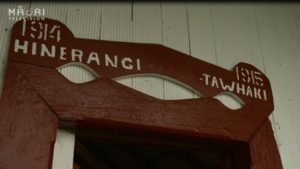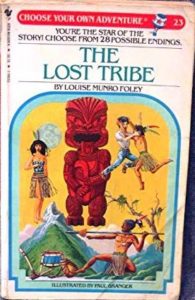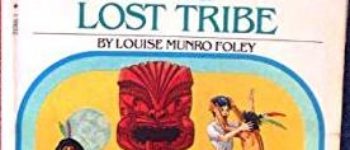2002: Discovery of Lost Tribe, Ngati Hinerangi
May 5, 2019
By AHNZ
 Ripping off New Zealanders on behalf of Maori tribes is a prestigious line of work, with a long and glorious tradition. National 4.0 had become so busy with this in government they tried to set a responsible limit. Prime Minister, Jim Bolger, and his Treaty Negotiations Minister Doug Graham, called this stopping place The Fiscal Envelope in 1994 but by 1996 gave in to the call for more and more resentment dollars. The Fiscal Envelope of ’94 was one billion dollars.
Ripping off New Zealanders on behalf of Maori tribes is a prestigious line of work, with a long and glorious tradition. National 4.0 had become so busy with this in government they tried to set a responsible limit. Prime Minister, Jim Bolger, and his Treaty Negotiations Minister Doug Graham, called this stopping place The Fiscal Envelope in 1994 but by 1996 gave in to the call for more and more resentment dollars. The Fiscal Envelope of ’94 was one billion dollars.
Sudden Recovery from Tribal Amnesia
 It was in this context of hundreds of millions of dollars and resources being in play that a lost tribe of Maoris was discovered in 2002. The secret of their existence was so well-kept that only one elder knew about it at all. So, in 2005, a meeting was called at the Hinerangi Tawhaki marae leading to the establishment of the Ngāti Hinerangi Trust.
It was in this context of hundreds of millions of dollars and resources being in play that a lost tribe of Maoris was discovered in 2002. The secret of their existence was so well-kept that only one elder knew about it at all. So, in 2005, a meeting was called at the Hinerangi Tawhaki marae leading to the establishment of the Ngāti Hinerangi Trust.
“We were almost extinct. We didn’t know we were Ngāti Hinerangi,”
“It took one of our kaumātua to actually say, ‘This is not right, Ngāti Hinerangi is an iwi, and we need to get our people to understand that'”
“Educating our own whānau on our existence as an iwi, rather than just a hapū of a neighbouring iwi, has been huge” – Dianna Vaimoso, a spokesperson for Ngāti Hinerangi Trust; Ref. An iwi nearly extinct reclaim identity through treaty settlement; Radio NZ
It’s not every day that anyone gets to find out they’re part of a lost tribe and heir to a huge fortune. The newly found tribe discovered they were not part of Tainui or any other tribe you’ll find in the history books or that had been paid compensations in the recent past. The new group decided to call themselves Ngati Hinerangi and began the campaign to be recognised for the first time so that they too could be apologised to and compensated all over again. This time, under the new identity.
Little Political Speed Bump
Doug Graham’s successor for organising Treaty Grievance payments has been Chris Finlayson in National 5.0. Finlayson takes the top prize for securing the most Treaty settlements of any government ever- 59 of them within his 9 years. In retiring (2019) he now risks being killed or being handed a criminal conviction like so many who have done this job before¹.
 The 2019 Settlement for Ngati Hinerangi was held back until National 5.0 had safely won the 2017 election as news reports from 2015 state. However, it was Labour who were able to form the government after that election so there has been a delay. Only within the last few weeks of 2019 have Ngāti Hinerangi Trust been able to receive and accept their settlement offer. I don’t know how many individuals they found to be part of the lost tribe but the Trust states that 57% of this community were agreeable. This low number may indicate future grievances or perhaps even another lost tribe to emerge at a later date?
The 2019 Settlement for Ngati Hinerangi was held back until National 5.0 had safely won the 2017 election as news reports from 2015 state. However, it was Labour who were able to form the government after that election so there has been a delay. Only within the last few weeks of 2019 have Ngāti Hinerangi Trust been able to receive and accept their settlement offer. I don’t know how many individuals they found to be part of the lost tribe but the Trust states that 57% of this community were agreeable. This low number may indicate future grievances or perhaps even another lost tribe to emerge at a later date?
Where Had They Been?
 In short, the lost tribe had been hiding very very well. Or, ‘strategically located’ as they put it, ever since 1840 or even earlier. When the Treaty came around for signing they didn’t go. When Waikato and Tauranga Maoris surrendered, Ngāti Hinerangi wasn’t there.
In short, the lost tribe had been hiding very very well. Or, ‘strategically located’ as they put it, ever since 1840 or even earlier. When the Treaty came around for signing they didn’t go. When Waikato and Tauranga Maoris surrendered, Ngāti Hinerangi wasn’t there.
“We carried that hara and that hurt and that stigma of being the unsurrendered rebels and being treated very badly since that time up until this,” Mr McDonald says; Ref. Unsurrendered rebels prepare to settle; waateanews.com (2015)
Remember too, most of that hurt and stigma had been a repressed memory until McDonald found this out himself some 10 years earlier.
Evidence from Oral History
When the strategically located tribe broke cover and found itself a number of remembered events needed to be written down so that Findlayson could spin them into gold. All the Supporting Documents are now online to be read here on the State’s website.
Some abstracts from Deed of Settlement Schedule – Documents 4 May 2019…
Ngāti Hinerangi tradition records that..Ngāti Hinerangi tūpuna followed the example set by Pōtatau and did not sign the Treaty.
Ngāti Hinerangi did not alienate any land prior to the 1860s and were only lightly touched by European settlement.
Ngāti Hinerangi tradition records that Ngāti Hinerangi warriors travelled to Taranaki to support the Kīngitanga forces
“George Grey, newly re-appointed as Governor, proposed establishing a system of local government for Māori….many Waikato Māori were suspicious of Grey’s rūnanga system,” and Ngāti Hinerangi did not show itself at this time
Ngāti Hinerangi tradition records that due to whakapapa links they were involved in the defence of Waikato throughout the Waikato War.
Ngāti Hinerangi tradition records that inland pā sites and settlements of Ngāti Hinerangi hapū were strategically situated along key points related to fighting the war in Tauranga
Ngāti Hinerangi traditional accounts state that 15 members of Ngāti Hinerangi participated in the Battle of Gate Pā
In 1864 Governor Grey and his ministers attended a “pacification hui” at Te Papa to determine the lands that would be confiscated by the Crown. Many Tauranga Māori, including those who had not surrendered, were absent.
In August 1864 the Crown entered into an agreement to purchase land at Te Puna and Katikati from a small group of chiefs..Ngāti Hinerangi were not party to the sale.
In 1866 a Crown official attempted to purchase Ngāti Hinerangi’s interests in the Te Puna-Katikati block, but they refused to sell their interests at that time. However, in November 1866 a deed of sale [went ahead between the] Crown and members of another iwi
My comment on the above is that it’s all very circumstantial and in support of why this tribe was nowhere to be seen. They weren’t at this or that hui, they didn’t exist in this or that deal. But then in 1871 the lost tribe appears to break cover for the first time…
In January 1871, after years of opposition to the Te Puna-Katikati purchase, a small group of chiefs from Ngāti Hinerangi and another iwi wrote to the Native Minister outlining a portion of their interests. They identified themselves as Hauhaus.
In May 1871, 6 chiefs, only three of whom were Ngāti Hinerangi or Ngāti Tokotoko, signed a separate deed in respect of Te Puna-Katikati, receiving payment of £471 for the combined interests of Ngāti Hinerangi, Ngāti Tokotoko and another group
Here at last we can expect some paper trail, some written evidence that the tribe exists and was recognised. No reference is given in the Settlement history documents however. But apparently the tribe’s representatives did exist at this time and, visiting Auckland, sold up. Did they identify as a tribe?
According to Ngāti Hinerangi tradition,..rather than surrender in 1864, most Ngāti Hinerangi had withdrawn to their inland settlements
Ngāti Hinerangi record that their tūpuna were killed by Crown forces in the [1867] attack.
According to Ngāti Hinerangi tradition, as a result of the repeated attack by the Crown forces, Ngāti Hinerangi were driven out of their settlements in Tauranga
Ngāti Hinerangi oral history records that Te Kooti wished to recruit Ngāti Hinerangi to his cause against the Crown as they were considered Hauhau or un-surrendered rebels. However, Ngāti Hinerangi did not join Te Kooti out of loyalty to the Kīngitanga.
The Native Land Court began investigating titles to lands claimed by Ngāti Hinerangi in March 1866..Ngāti Hinerangi were absent from the hearing
Again, all of the above boils down to ‘Ngati Hinerangi were here all along but according to Ngati Hinerangi tradition they were at no time observed. We then have a 60 year gap where no explanation for the tribe’s absence is given followed by…
“…we claim that this land belongs to us, that is, to the Ngāti Hinerangi tribe…we the Ngāti Hinerangi request that this land be restored to us. We emphatically say that this land was unjustly confiscated.”- James Douglas, 1927
Again, the Settlement’s history page offers no reference or footnotes but this sounds like real evidence. To show Ngāti Hinerangi were a real tribe the time to come out of hiding was certainly during the Sim Royal Commission of 1927. Unfortunately that’s all the information that is given, seemingly the Ngāti Hinerangi were not more forthcoming and kept to their habit of being strategically located until the 1940s…
In 1944 James Douglas submitted another petition on behalf of Ngāti Hinerangi..The petition stated that Ngāti Hinerangi had been wrongfully deprived of the land when the Crown purchased the area from others… the government rejected the petition from Ngāti Hinerangi.
 So, much like this 2019 Settlement report the 1927 and 1944 efforts seem to have no content per se. What is interesting about all three is, at least, that they do make the claim that Ngāti Hinerangi is a tribe. Perhaps these sources can be followed up to prove they are a tribe and it is curious that the Settlement report forgoes this opportunity.
So, much like this 2019 Settlement report the 1927 and 1944 efforts seem to have no content per se. What is interesting about all three is, at least, that they do make the claim that Ngāti Hinerangi is a tribe. Perhaps these sources can be followed up to prove they are a tribe and it is curious that the Settlement report forgoes this opportunity.
If Ngāti Hinerangi really have been raised from the dead where’s the proof? I’m not saying there isn’t any but it’s an extraordinary re-appearance if so. And extraordinarily lucrative too.
The settlement included financial redress of $8.1m, cultural revitalisation payment of $200,000, marae rebuild of $20,000, co-governance arrangement over the upper Waihou and Piako river catchments and vesting of 14 cultural redress properties which includes part of Wairere Falls (Wairere Falls Scenic Reserve) which is considered a sacred awa to Ngāti Hinerangi.
“I look forward to welcoming the Ngāti Hinerangi to Parliament to complete the process when the Bill is introduced.”- Treaty of Waitangi Negotiations Minister Andrew Little; Ref. Ngāti Hinerangi and Crown settle Treaty breaches; Stuff
As members of a tribe in their own right they would not be double-dipping into Treaty settlements to be paid out all over again. Perhaps they have been a lost or secret tribe for some or all of New Zealand’s history but it took a genius like Chris Findlayson to find them like some modern Henry Stanley finding Doctor Livingstone.
But after all his groundwork for National 5.0 the political spoils for this one now go to Labour 5.0’s Andrew Little.
—
1 By all means ask if you’re interested
image ref. ROBERT KITCHIN/STUFF; ibid
image ref. The Lost Tribe (Choose Your Own Adventure) (1983); The definitive novelisation of this story? Amazon
 Like Comment Share
Like Comment Share





